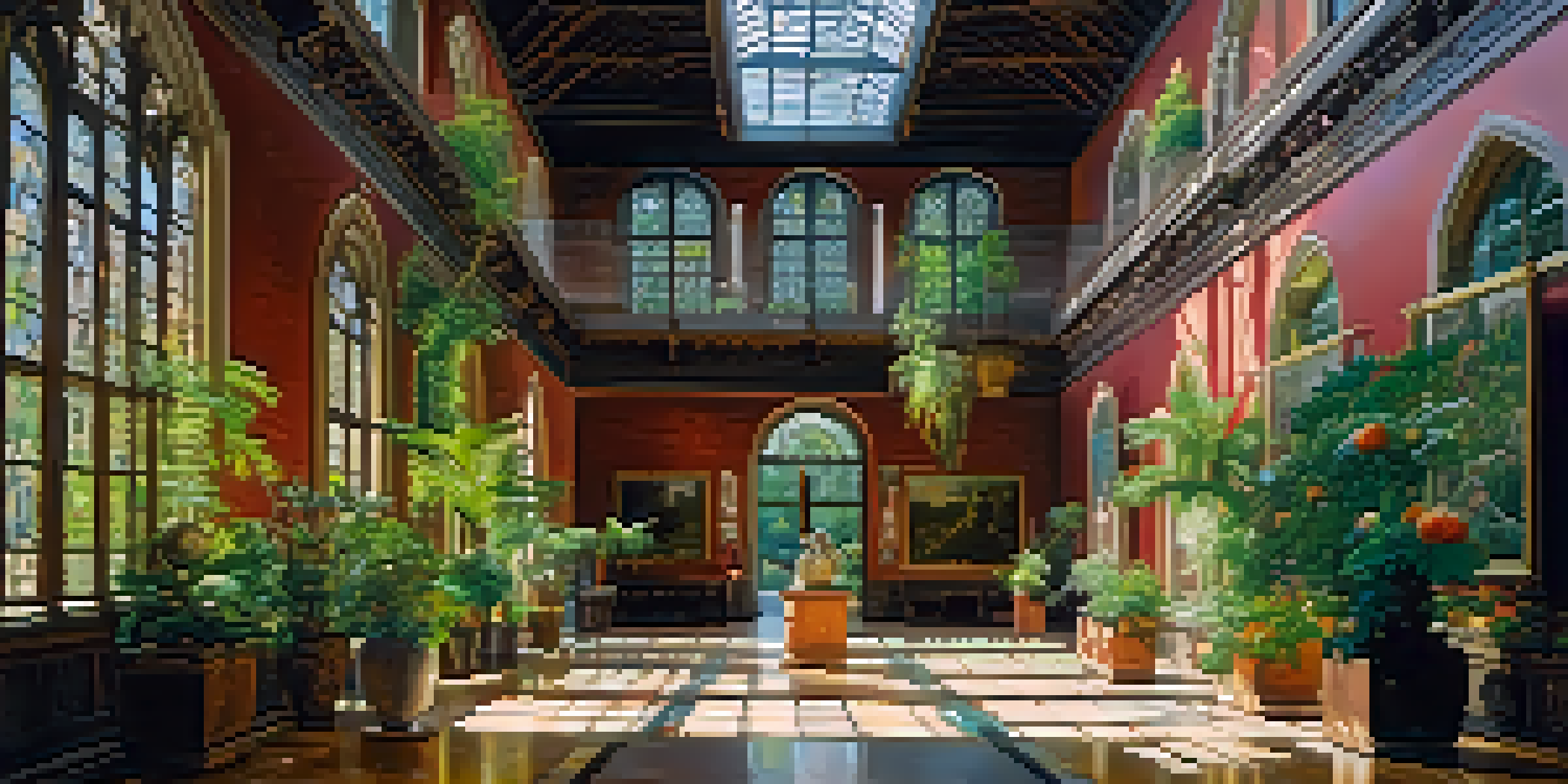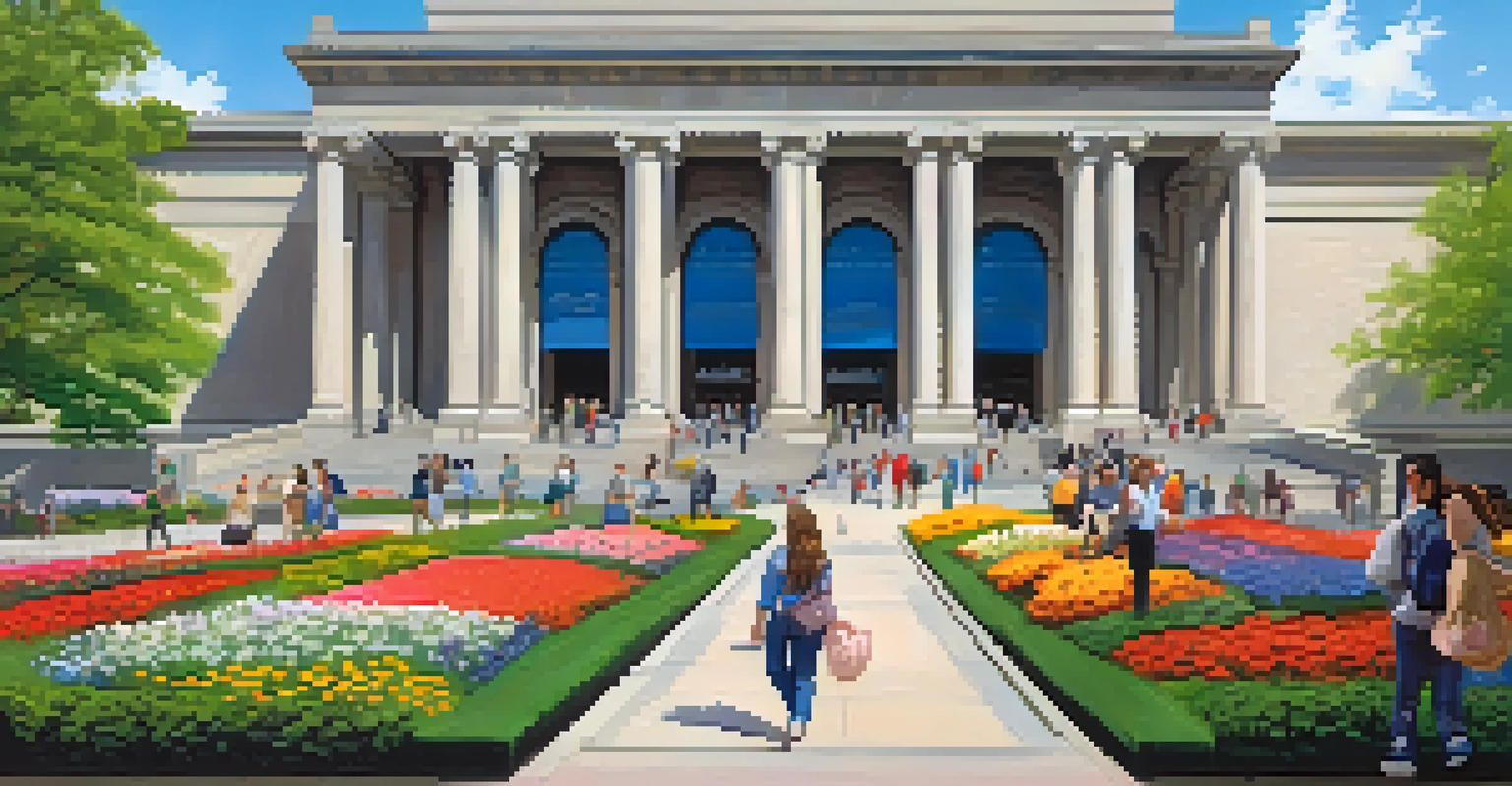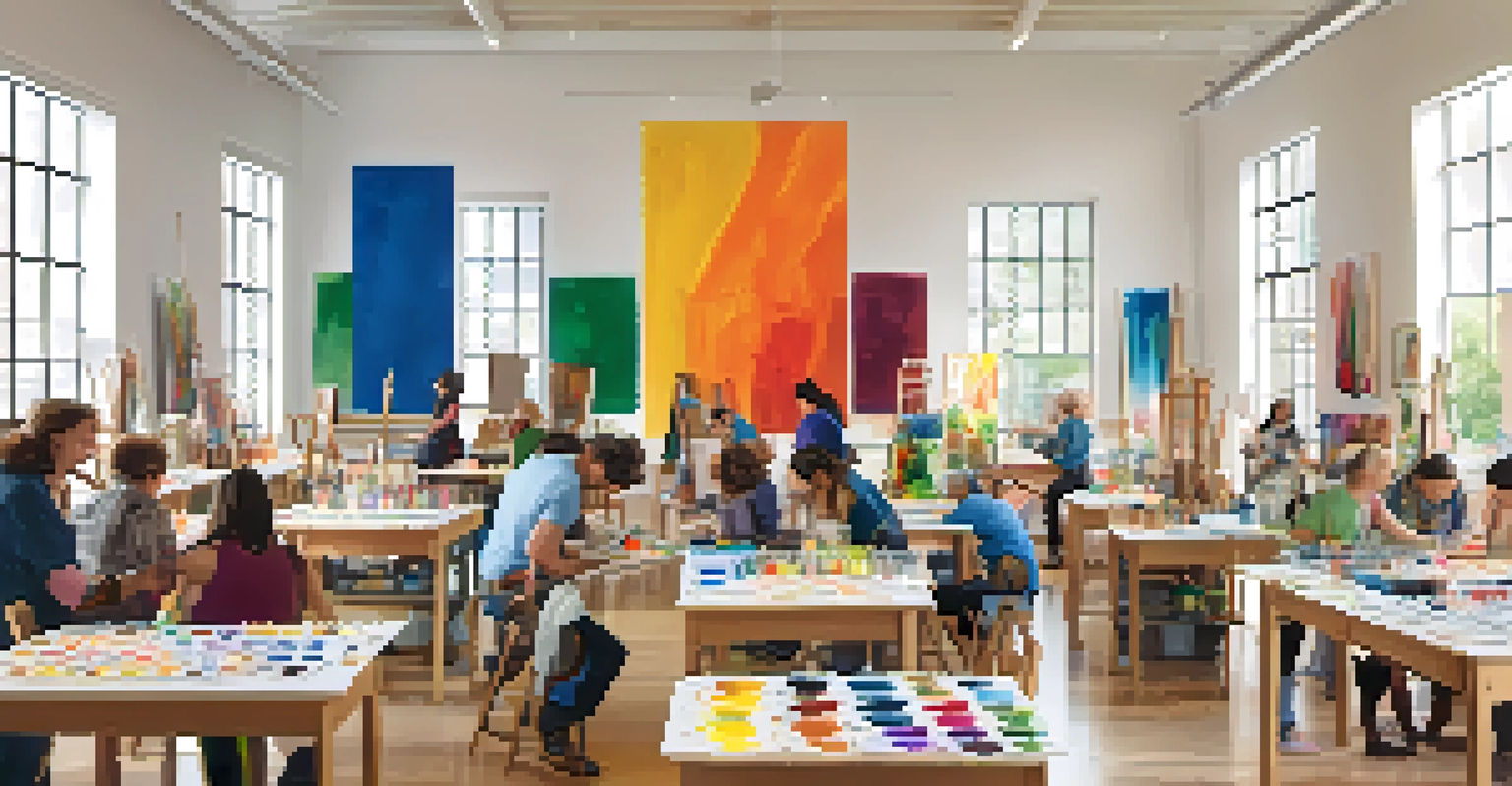Art Institutions in Massachusetts and Their Cultural Impact

The Rich History of Art in Massachusetts
Massachusetts has long been a cradle of artistic innovation, with roots that date back to the colonial era. The state's rich history is reflected in its many art institutions, which have served as catalysts for creativity and cultural dialogue. From the Boston Museum of Fine Arts to the Isabella Stewart Gardner Museum, these institutions have preserved and showcased countless works that tell the story of our past.
Art is not what you see, but what you make others see.
The evolution of these art spaces mirrors broader societal changes, influencing everything from local communities to the national stage. They have played a significant role in movements such as American Impressionism and Abstract Expressionism, showcasing artists who have shaped the way we see the world. Through exhibitions and educational programs, these institutions continue to inspire new generations of artists and art lovers alike.
Moreover, Massachusetts’ art history is not just confined to the visual arts; it extends into literature, theater, and music, creating a rich tapestry of cultural expression. Institutions such as the Boston Symphony Orchestra and various theater companies contribute to this vibrant landscape, demonstrating the interconnectedness of all forms of art. Together, they foster an environment where creativity thrives.
Prominent Art Institutions in Massachusetts
Massachusetts is home to several renowned art institutions that are recognized globally. The Museum of Fine Arts in Boston, for example, boasts an impressive collection of over 450,000 works, ranging from ancient artifacts to contemporary art. Its diverse range of exhibitions allows visitors to experience art from different cultures and eras, making it a vital cultural hub.

Another key player is the Isabella Stewart Gardner Museum, known for its stunning architecture and unique collection. Gardner's vision was to create a museum that felt like a home, filled with art that sparked joy and conversation. This approach not only makes art accessible but also invites visitors to experience it in a personal and intimate setting.
Massachusetts: An Art Leader
Massachusetts is home to world-renowned art institutions that have significantly shaped the cultural landscape both locally and nationally.
The Harvard Art Museums also deserve mention, as they serve as an academic resource while also being a public institution. With collections that span centuries and cultures, the museums provide a platform for both scholarly research and public engagement through exhibitions and educational initiatives. These institutions collectively contribute to Massachusetts’ status as a leader in the art world.
Cultural Programs and Community Engagement
Art institutions in Massachusetts are not just about showcasing art; they also engage with the community through various programs. Many museums offer workshops, lectures, and family days that encourage people of all ages to get involved with art. These initiatives help demystify the art-making process and invite participation, fostering a sense of belonging among community members.
The role of art is not a rarified, intellectual one; it is social and political. It is the voice of a culture.
For instance, the Boston Children’s Museum regularly hosts interactive exhibits that allow kids to explore their creativity while learning about different art forms. Such programs play a crucial role in nurturing young talent and instilling an appreciation for the arts in future generations. By involving local schools and families, these institutions create a vibrant cultural ecosystem.
Moreover, partnerships with local artists and organizations amplify their reach within the community. Collaborations often lead to unique projects that reflect the diverse voices of Massachusetts residents. This inclusiveness not only enriches the cultural landscape but also ensures that art remains a relevant and integral part of everyday life.
The Role of Art in Education
Art institutions play a pivotal role in education, offering resources and programs that enhance learning. Many museums have developed educational curricula that align with state standards, making art accessible to students in a meaningful way. This integration of art into education helps foster critical thinking, creativity, and emotional intelligence among young learners.
For example, the Massachusetts College of Art and Design provides students with an immersive environment where they can explore various artistic disciplines. By encouraging experimentation and exploration, the college prepares students for careers in the arts, while also contributing to the local economy. The hands-on experience combined with academic rigor creates a dynamic learning atmosphere.
Art's Role in Community Engagement
Art institutions actively engage communities through programs and collaborations that foster creativity and inclusivity.
Additionally, many institutions offer scholarships, internships, and mentorships to support aspiring artists. These opportunities not only help students build their portfolios but also connect them with industry professionals. In this way, art institutions serve as vital conduits for education and professional development within the creative sector.
The Economic Impact of Art Institutions
Art institutions in Massachusetts are significant drivers of the local economy, contributing to job creation and tourism. According to studies, cultural institutions generate billions in economic activity, supporting thousands of jobs in various sectors, including hospitality and retail. This economic impact extends beyond the walls of museums and galleries, benefiting the entire community.
Tourism is another vital aspect, as art institutions attract visitors from around the world. The unique offerings of places like the Museum of Fine Arts and the Boston Symphony Orchestra create a compelling reason for people to visit the state. Events like art fairs and exhibitions not only showcase local talent but also draw in tourists, further enhancing the economic benefits.
Moreover, art institutions often collaborate with local businesses, creating partnerships that stimulate growth. For example, art walks and neighborhood festivals encourage visitors to explore local shops and eateries, creating a vibrant cultural experience. This synergy between art and commerce highlights the broader economic role that art institutions play in Massachusetts.
Art as a Tool for Social Change
Art has the unique ability to provoke thought and inspire social change, and Massachusetts art institutions are at the forefront of this movement. Many institutions actively engage with social issues through exhibitions that address topics like inequality, climate change, and cultural identity. By using art as a medium for dialogue, they encourage reflection and action among visitors.
For instance, the Museum of Fine Arts has hosted exhibitions that confront racial and social injustices, sparking conversations that extend beyond the gallery walls. These programs invite diverse perspectives and foster a deeper understanding of pressing societal issues. Through art, institutions can challenge the status quo and inspire collective action.
Art Drives Economic Growth
Cultural institutions in Massachusetts contribute billions to the economy through job creation and tourism, enhancing local communities.
Additionally, community-focused art initiatives often highlight local issues and empower marginalized voices. By providing a platform for underrepresented artists, these institutions help amplify important narratives that might otherwise remain unheard. This commitment to social change illustrates the transformative power of art in shaping a more equitable society.
Looking to the Future of Art Institutions
As we look toward the future, art institutions in Massachusetts are evolving to meet the needs of a changing world. With advancements in technology, many museums are incorporating digital tools to enhance visitor experiences. Virtual tours, interactive exhibits, and online educational resources have made art more accessible than ever before.
Additionally, there is a growing emphasis on sustainability within the art world. Institutions are exploring eco-friendly practices, from energy-efficient buildings to promoting environmentally conscious art. This commitment to sustainability not only addresses pressing global challenges but also resonates with a younger audience increasingly concerned about climate issues.

Finally, art institutions are likely to continue fostering inclusivity, embracing diverse voices and perspectives. By prioritizing representation and community engagement, these institutions can ensure that art remains a vital and relevant part of our cultural landscape. The future of art in Massachusetts promises to be dynamic, innovative, and impactful.